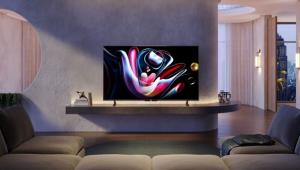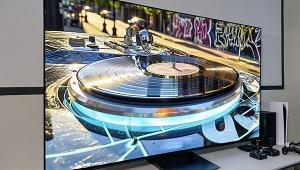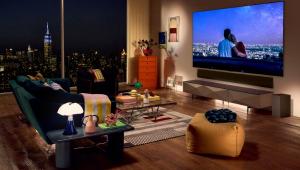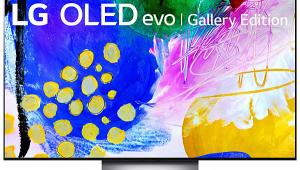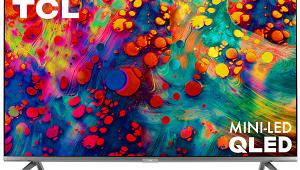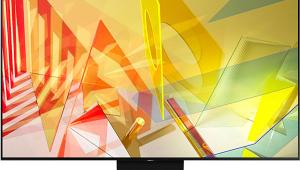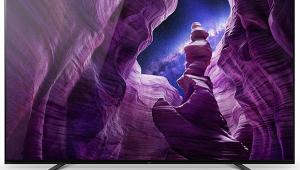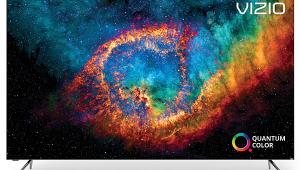Samsung QN65Q90T LCD Ultra HDTV Review Test Bench
For picture settings used in the viewing, go to www.soundandvision.com. The measurements here were made using CalMAN software from Portrait Displays (www.portrait.com) together with Photo Research PR-650 and Klein K-10A color meters and a Fresco Six-G test pattern generator from Murideo/AVPro.
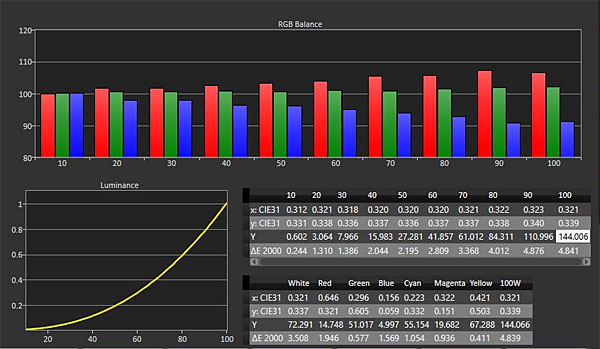
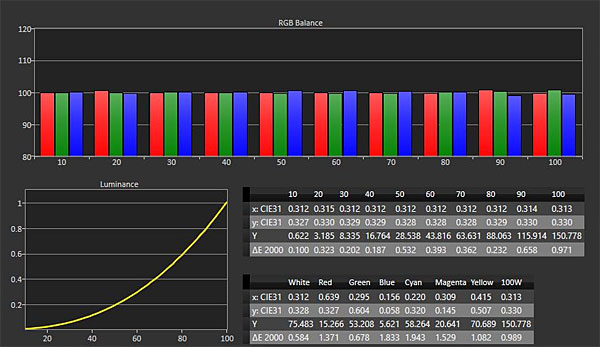
HD/SDR
Full-On/Full-Off Contrast Ratio: unmeasurable
With its Contrast control at 30 in the Movie picture mode and Local Dimming on Standard (the default), the Q90T's measured peak white level on a 10% full white window was 151 nits (44 foot-lamberts) after calibration. A full black screen was unmeasurable, rendering the Full-On/Full-Off Contrast Ratio unmeasurable. This is clearly due to local diming shutting off the backlight with a full black image (the local dimming can't be turned off—not that you'd want to in normal use).
In the Warm2 Color Tone, the pre-calibration grayscale Delta E, from 20% to 100%, was under 3.37 at or under 70% and a maximum of 4.87 at 90%. The maximum color Delta E was 1.95 (red) before calibration. After calibration, the grayscale Delta E remained at or below 1.0 across the board and the color Delta Es were all under 1.84 (blue). In the BT.1886 setting of the Gamma control, the gamma curve followed the BT.1886 standard without visible deviation.
(Delta E is a figure of merit indicating how close the color comes to the D65 HD standard at each point in the brightness range. Values below 3—some experts allow for 4—are generally considered visually indistinguishable from ideal.)
The Q90T's input lag (1080p) measured 81.8ms in Movie mode and 13.8ms in Game mode with Game Motion Plus On, and 8.8ms with Game Motion Plus Off.
Ultra HD/HDR
Full On/Full Off Contrast Ratio: Unmeasurable
While the Q90T's default Contrast setting was 50, at that level the EOTF (gamma) curve produced excessive luminance on the bright end of the curve. Lowering the Contrast control to 42 for both the before and after readings produced a highly accurate EOTF curve, so that setting was used for calibration.
Post-calibration with the Brightness set to 50 (default), Contrast at 42, Gamma at BT.2084, Local Dimming at Standard, the measured peak level on a 10% white window was 1,293 nits at 100% (94.4 nits at 50%), and the black level 0.000 nits—again, for an unmeasurable full-on/full-off contrast ratio.
With the Warm2 Color temperature and the above basic settings selected, the pre-calibration grayscale Delta E hit a maximum of 10.5 (at 70%) and the color Delta E 7.3 (average 4.6). Post-calibration, the grayscale Delta E never exceeded 3.0 with luminance included (average 0.9), and 3.8 without luminance (average also 0.9). The post-calibration color Delta E never exceeded 2.4 (in blue). A color checker analysis, which measures the accuracy of dozens of different colors, resulted in an average Delta E of 1.91 with luminance included and 1.67 without.
As above, the post calibration peak white level measured just under 1,300 nits with a 10% white window, 900 nits with a 50% window, 900 nits with a 50% window, and 600 nits with full-screen white (100%).
Both color saturation and tracking were good for P3 within a BT.2020 color space, and very good in BT.709 within the same BT.2020 space. The Q90T reached 73.6% of BT.2020 and 92.7% of P3 (using the 1976 standard for both).
The Samsung passed our 3:2 and 2:2 de-interlacing and upconversion tests. Few high-quality modern sources are interlaced, but this might be a benefit if you have a large collection of DVDs (though there are other options, such as a Blu-ray player or A/V receiver's own built-in deinterlacing).


